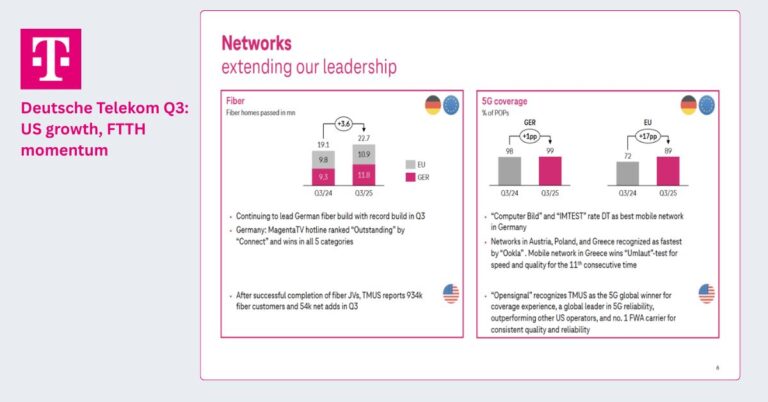Senators urge FCC to protect CBRS and 6 GHz spectrum
With the FCC under pressure to deliver 300 MHz of auctionable spectrum, a group of Senate Republicans is urging the agency to preserve the shared 3.5 GHz CBRS band and the unlicensed 6 GHz band that underpin private 5G and next‑gen Wi‑Fi.
Senate letter seeks CBRS/6 GHz stability
Ten Senate Republicans, including five members of the Senate Commerce Committee, sent a letter urging the FCC to ensure existing operations in the 6 GHz and Citizens Broadband Radio Service (CBRS) bands continue “without disruption.” Their concern: budget legislation directs the FCC to auction 300 MHz of non‑federal spectrum—at least 100 MHz from the upper C‑band—without explicitly protecting 6 GHz or CBRS, stoking fears that shared bands could be repurposed for exclusive licenses.
NTIA backs 6 GHz for Wi‑Fi
Adding weight, NTIA Administrator Arielle Roth called for preserving 6 GHz for Wi‑Fi, a stance applauded by NCTA as a recognition that unlicensed spectrum is an economic engine. NTIA’s support matters because the agency coordinates federal spectrum use and partners with the FCC on reallocation plans.
Carriers, cable, and CBRS users split on spectrum policy
National carriers historically prefer exclusive licensing and previously opposed opening 6 GHz to unlicensed use. AT&T and the Department of Defense have floated ideas to sell portions of CBRS and relocate incumbents. Others—cable operators such as Charter and CBRS users across rural and enterprise markets—warn that changing the ground rules now would strand investments. Verizon has supported increasing CBRS power; T‑Mobile urged more data before decisions; many CBRS users opposed higher power due to interference risks.
Why 6 GHz and CBRS matter for Wi‑Fi 7, private 5G, and rural broadband
Both bands are now foundational capacity layers for enterprise, neutral‑host, and rural connectivity strategies.
6 GHz drives Wi‑Fi 6E/7 capacity and innovation
The full 1,200 MHz of 6 GHz is fueling Wi‑Fi 6E and emerging Wi‑Fi 7 (802.11be) deployments in offices, venues, and homes. It enables multi‑gigabit LANs, AR/VR, low‑latency collaboration, and massive offload of mobile traffic. Automated Frequency Coordination (AFC) is unlocking standard‑power operation for outdoor and large venues, complementing low‑power indoor use. Any move to carve out exclusive licensing would fragment channels, stall device roadmaps, and undercut the U.S. lead in Wi‑Fi innovation.
CBRS powers private 5G, FWA, and neutral‑host networks
CBRS (3.55–3.7 GHz; 3GPP Band n48) blends licensed (PAL) and unlicensed‑like (GAA) access under SAS control, protecting Navy radar while supporting WISPs, rural FWA, neutral‑host, and enterprise private LTE/5G. It lowered barriers to entry and expanded competition in underserved areas. Cable MSOs rely on CBRS for mobile offload alongside MVNOs, and enterprises use it for deterministic indoor coverage where Wi‑Fi struggles. Disrupting CBRS or raising power without careful coexistence modeling could create interference, devalue PALs, and deter private‑network adoption.
Policy risks and technical trade‑offs in CBRS and 6 GHz
The spectrum pipeline must grow, but the lowest‑friction path is not through bands already in heavy use with intricate sharing regimes.
Auction mandates vs. costly relocation risks
Congress wants 300 MHz to auction, with a floor contribution from upper C‑band. Pulling spectrum out of CBRS or 6 GHz would force costly, multi‑year migrations of active users, unravel established SAS/AFC frameworks, and trigger litigation. The administrative burden would likely exceed the time value of hitting near‑term auction targets. More pragmatic candidates include clearing or expanding underutilized mid‑band outside of these shared ecosystems, or advancing dynamic sharing in bands not yet critical to last‑mile and enterprise operations.
Weighing higher CBRS power and interference impacts
Higher CBRS power could improve macro coverage economics for carriers, but it raises co‑channel interference and protection challenges for Tier‑2/3 users, especially near coastal ESC sites. The FCC’s record already shows divergence: Verizon favored an increase, T‑Mobile asked for more study, and many existing operators warned of “unworkable” interference. Any change should be modeled against real‑world topologies, device EIRP limitations, SAS coordination behavior, and the economic impact on PAL/GAA coexistence.
Strategic guidance for operators, cable, and enterprises using CBRS/6 GHz
The policy posture is shifting; safeguard your roadmaps and quantify your dependency on these bands now.
Create a dependency map. Inventory where your networks use 6 GHz (LPI, standard‑power with AFC) and CBRS (n48/LTE Band 48) across offload, neutral‑host, private 5G, and FWA. Tie endpoints, traffic volumes, and SLAs to specific spectrum layers.
Engage the docket. File data on performance, interference, and investment tied to these bands. Concrete field metrics carry more weight than principles in spectrum proceedings.
Build spectrum agility. Design RAN and LAN architectures that can pivot across adjacent options—5 GHz and 6 GHz for Wi‑Fi; 3.7–3.98 GHz (C‑band), 2.5 GHz, and 4.9 GHz for 5G—without forklift upgrades. Favor radios and CPE with broad band support and software‑defined controls.
Stress‑test private network economics. Model the impact of CBRS power or licensing changes on coverage, device density, and PAL valuation. Consider hedging with localized small cells in alternate bands and dual‑connectivity with Wi‑Fi 7 for capacity peaks.
Coordinate with SAS/AFC providers. Align on interference detection, dynamic reconfiguration, and change‑management playbooks. Ensure SLAs reflect policy risk and update firmware plans for rapid parameter shifts.
What to watch next in CBRS and 6 GHz policy
Key regulatory and market signposts over the next 6–12 months will shape investment confidence.
FCC path to 300 MHz and band selection
Track how the Commission proposes to meet the auction mandate, especially how much it expects from upper C‑band versus other mid‑band candidates, and whether it explicitly reaffirms protections for 6 GHz and CBRS.
FCC decisions on CBRS power levels
Watch the FCC’s evaluation of higher power proposals, the weight it gives to field evidence from rural operators and enterprises, and any SAS rule updates to mitigate interference.
NTIA‑FCC coordination and federal incumbent dynamics
NTIA’s stance on 6 GHz and any DoD proposals affecting CBRS will heavily influence FCC options, timelines, and relocation funding assumptions.
Vendor roadmaps and operator signals
Follow device roadmaps for Wi‑Fi 7 and CBRS n48, SAS/AFC certifications, and operator disclosures on offload and private 5G growth. Moves by Verizon, T‑Mobile, AT&T, cable MVNOs, and EchoStar‑related license transactions will indicate where market gravity is heading.
Bottom line: The fastest way to keep America’s wireless edge is to expand the spectrum pipeline without destabilizing the shared bands that already deliver tangible capacity, competition, and innovation. Preserve 6 GHz and CBRS; add new supply elsewhere.









































